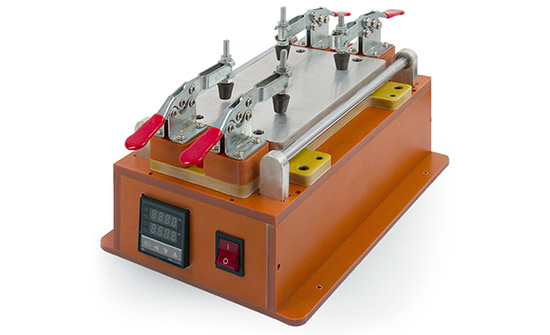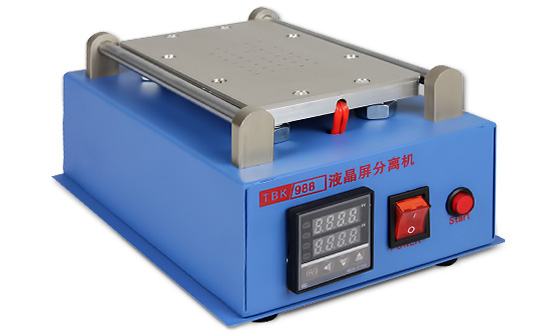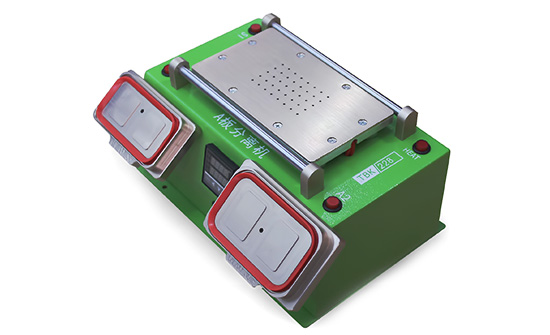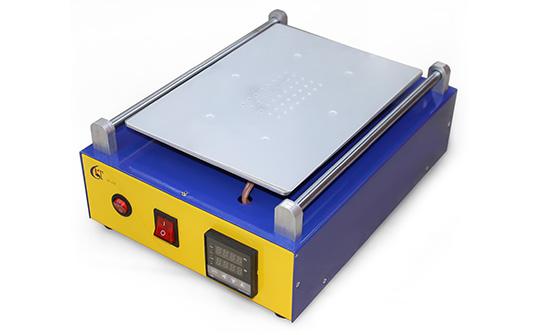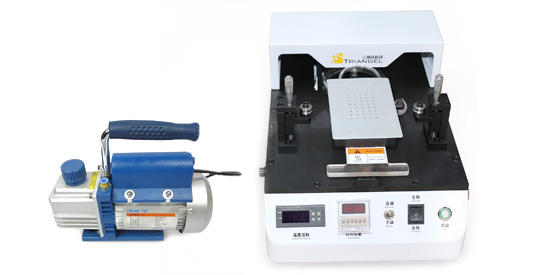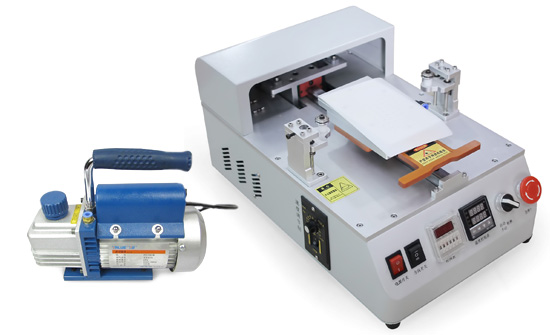How to Choose the Right Device if You Need to Separate a Display Module
How to Choose the Right Device if you need to separate a Display Module Nowadays we are witnesses of a rapid growth and development of cell phones and tablets industry. No doubt that the undisputed leader among all communication devices is a smartphone. Its main advantage is the combination of a multifunctional computer and cell phone in one device. Nevertheless smartphones also have some disadvantages. They can be easily broken as a result of dropping or hitting, thus quite often it is a glass that needs replacement. A couple years ago such problem had only one solution - to buy and install a new LCD module. But it is quite expensive. Today it is absolutely unnecessary to replace the whole module; you can replace a glass only.
The first model of a separator (SM-252) came into the market two years ago. It showed us how to separate the glass and module easily.
However, the progress never stops and we keep an eye on technologies evolution. Now we’d like to offer you new devices for display modules separation.
Let’s have a look on each device separately.
Separators SM-252, TBK-988, TBK-228, AS-111 and AS-113c are classified as manual machines.
In fact, all separators are designed for glass or display assembly ungluing. They also prevent damage of a polarization film.
This device’s been well-known for a long time for good feedback on the market. SM-252 separates a glass from a cell phone or tablet in a couple of minutes. Four arms firmly hold the touchscreen. SM-252 quickly warms up to the required temperature and heats the display module so that you can cut the glue easily. It is compatible with all LCD modules up to 7".
Separators with Build-in Vacuum Pump
TBK-988
TBK-988 is a separator machine with built-in vacuum pump. The LCD module is attached to the separator platform with the sucked flow of the air. When the module is firmly fixed to the platform the separator gets heated ms up to the required temperature. TBK-988 has a control panel for temperature settings, two buttons to turn the device on/off and the pump. The little display shows the set and current temperature. It is used for all LCD modules with diagonal up to 7".
TBK-228
TBK-228 is also equipped with a built-in vacuum pump. Its main advantage is the function of frame unsticking in Samsung Galaxy/ Note. As is well known, the separation of a frame is a kind of challenge. But not for TBK-228. It will do it in a minute. Two special platforms are designed for quick and qualitative frame unsticking.
The vacuum pump produces the strong air flow that fastens the module to the platform. The platform heats the module to the required temperature so that you could separate the glass with the wire. TBK-228 is compatible with cell phones and tablets with LCD diagonal up to 7".
AS-111
AS-111 is a separator with the built-in vacuum pump. Actually, there is no difference in operating principles of AS-111and all abovementioned devices with vacuum pumps. There are two on/off switches - round and rectangular. The round on/off switch turns the pump on/off and the rectangular one is used to start or shut the separator down. There is also a temperature indicator. AS-111 is quite compact and occupies little place. It is highly recommended for separating the broken glass and display module in up to 11.1” smartphones/cell phones or tablets.
Separators with External Vacuum Pump
There are three new separators with external vacuum pumps: AS-113c, MT-ZDF220 and LY-948.
There is no difference between the operating principles of devices with built-in or external vacuum pumps. The main distinction is the pump location. The external pump has one drawback, when it is working it makes light noise.
All abovementioned models are compatible with the same vacuum pump. So you can buy different separators but save on the pump.
See the technical specifications for the external vacuum pump below.
| Vacuum pump technical specifications | |||||||
| Model | Voltage (V) | Power(W) | Size (mm) | ||||
| FY-1H-N | 110/220 | 150 | 260x110x200 | ||||
AS-113c
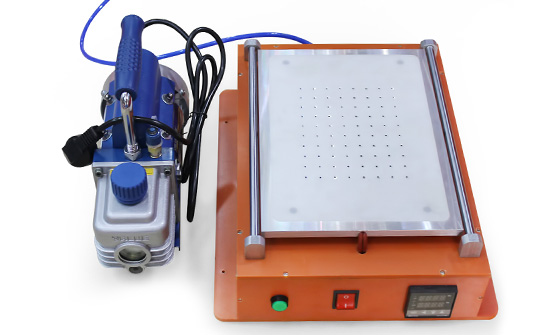
It is obvious that AS-113c and TBK-988 look very similar. Both have two on/off switches, the pump and the indicator of temperature range. The main difference between these machines is the location of a pump. AS-113c has got an external pump which is placed next to the separator, while the pump in TBK-988 is built-in. The external pump is a quite universal device. When it breaks down, you need to buy just a pump but not a new separator. You can also use it for any other purposes. The drawback of this device is its size. It is quite big and needs more space. Decide which characteristics are critical for your performance before purchasing the device. AS-113c is recommended for repairing cell phones and tablets with diagonal up to 11.1".
Semi-automatic Separators
Let’s have a look on semi-automatic separators. Their main advantages are speed and accuracy.
MT-ZDF220 and LY-948 look very similar. They’ve got the same pump, the operational principles also don’t differ. They are designed to separate the display modules with diagonal up to 7". The only one difference between these devices is the manufacturing company. With these separators you can set the wire as accurately as possible not to damage the polarization film. You won’t need to place the wire between the glass and the touchscreen to cut glue, the separator will do it for you.
You can find all technical characteristics of separators in the table below, so choose the device that will meet all your requirements.
| LCD Module Separation Devices | Technical Specifications | ||||||||
| Voltage(V) | Temperature range | Power (W) | Platform Size (mm) | Separator Size (mm) | Compatible LCD Modules | Vacuum Pump Availability |
|||
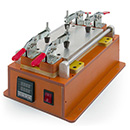 |
SM-252 | 110/220 | 0-400 °C | 250 | 200x110 | 320x160x190 | up to 7" | - | 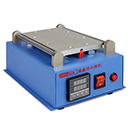 |
TBK-988 | 110/220 | 0-400 °C | 250 | 200x110 | 260x150x120 | up to 7" | Built-in | 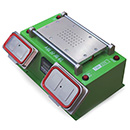 |
TBK-228 | 110/220 | 0-400 °C | 250, Frame Platform Power 100W | 190x110 | 300x205x165 | up to 7" | Built-in |
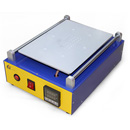 |
AS-111 | 110/220 | 0-400 °C | 800 | 250x175 | 300x230x120 | up to 11.1" | Built-in | |
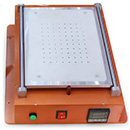 |
AS-113c | 110/220 | 0-400 °C | 800 | 250x190 | 300x230x120 | up to 11.1" | External | |
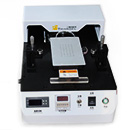 |
MT-ZDF220 | 110/220 | 0-400 °C | 250 | 170x100 | 520x320x200 | up to 7" | External | |
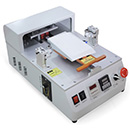 |
LY-948 | 110/220 | 0-400 °C | 250 | 170x100 | 520x320x200 | up to 7" | External | |
How to choose the separator?
If your service center deals mainly with broken smartphones, we recommend buying a semi-automat separator. You will separate the glass quickly and not damage the polarization film.
If you have to repair a lot of tablets, you will need to buy the separator for devices up to 11.1". Such separators can be used for tablets and smartphones.
If you separate the glass from the module once in a blue moon, you can use one of the machines for up to 7" devices. Be careful not to damage the polarization film.
When it comes to the operating principles, in general all the mentioned separators are similar. Mainly they differ by colors, materials and manufacturing companies.
If you have any questions concerning the devices, please contact our technical support. If you need additional information on how to order the separator, please ask the manager via sales chat.
By All Spares Team